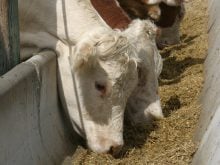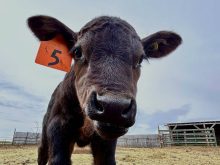Markets decide | Some producers receiving bigger profits without hormones and antibiotics
When Will Samis decided five years ago to produce beef free of added growth hormones and antibiotics, his choice wasn’t prompted by antipathy toward the two products.
Samis was tired of being a price taker in the beef business.
“We were, as farmers, paying First World prices for inputs and competing for Third World prices on our sales. That didn’t make a heck of a lot of sense,” said Samis, one of six producers who comprise Penokean Hills Farms, a branded beef company in the Algoma region of Ontario near Sault Ste. Marie.
Read Also

Farmland advisory committee created in Saskatchewan
The Saskatchewan government has created the Farm Land Ownership Advisory Committee to address farmer concerns and gain feedback about the issues.
Samis said the producers created Penokean Hills in response to low cattle prices in the post-BSE era of the 2000s. It was an attempt to capture more of the profits in the beef value chain, including feeding and retail.
Whatever the reason, they were gazing into the right crystal ball because a growing percentage of Ontario consumers now want to eat “natural” beef, said Tom Hamilton, beef program lead for production systems with the Ontario agriculture ministry.
“I think this (natural beef) has a lot of staying power,” he said.
“There is no problem with what we would call conventionally produced beef, but consumers are given choices and if they’re given choice to buy a product that is advertised as no added hormones, no antibiotics … that is appealing to a segment of consumers.”
Hamilton said the number of farmers producing growth hormone free beef is increasing, as is consumer demand for the product.
He couldn’t provide statistics to back up the observation, but a Google search of Ontario and natural beef offers a hint of the growth in the sector. Dozens of websites promote growth hormone free and antibiotic free beef produced on Ontario farms.
In the United States, a National Cattlemen’s Beef Association website called www.beefretail.org publishes data on the size of the natural-organic beef sector.
Natural-organic beef represented 3.8 percent of the monetary value of beef sales in the U.S. in the fourth quarter of 2011, compared to 1.1 percent in 2003.
Ontario producers and small farmer co-operatives who sell natural beef to consumers comprise a substantial chunk of the market in that province because large companies haven’t cornered the natural beef market.
However, the U.S. retail market is dominated by several players.
Laura’s Lean Beef, a division of Meyer Natural Foods that specializes in lean beef free of added growth hormones and antibiotics, had revenues of $160 million in 2010.
“We’re in 7,000 stores in the U.S. and we’ve got just as much response in the Great Plains of the U.S. as we do on the east and west coast,” said Nelson Curry, director of non-fed cattle procurement for the company.
Laura’s Lean Beef’s sales are growing by the “high single digits” annually, Curry added. He anticipated similar growth in years to come.
A shortage of statistics about the Ontario market makes it difficult to ascertain how fast the natural beef market is expanding. As well, many producers in the natural beef business circumvent retailers and sell their product directly to consumers.
Brian Pogue, beef program lead for genetics with the Ontario agriculture ministry, said this emerging market represents an opening for beef producers to win over consumers who might otherwise avoid steak, hamburgers and roasts.
“I think there are a number of people who won’t eat some of these (beef) products because of the hormones and the antibiotics,” he said.
“So the beef industry actually gets an opportunity to increase per capita consumption, if they go ahead and supply a product to those consumers.”
Pogue, who used to work for Laura’s Lean Beef in Ontario before the company left the province several years ago, said consumers buy beef free of added growth hormones for a number of reasons.
“I remember several times having (conversations) with single moms and they’d pick up a package of Laura’s Lean hamburger and I’d see they’d have a package of commodity hamburger in their shopping cart,” he said.
“(They’d say), this Laura’s Lean is for my kids. I can’t afford that for myself.”
In the U.S., Laura’s Lean Beef uses its advertising budget to win over upscale urban mothers.
“One of the main targets would be the upper middle class, educated female consumer, shopping for her family and looking for a product that is wholesome, less fat content and something she can feed her family and feel good about it,” Curry said.
Samis said demand for Penokean Hills beef hasn’t grown in his regional market as rapidly as he had expected. What the company does sell is sold at retail stores in the region and directly to consumers.
“We do sell by the half, but most of it is sold in 25 lb. boxes,” he said.
“We don’t do any wholesale because we haven’t found a wholesaler who understands the brand concept of local beef. They always want to compare it to commodity beef.”
Each of the six producers in the company has a feedlot on their farms, but only animals that grade AA or better receive the Penokean Hills label.
“If they don’t grade, then the member of our company … sells them some other way,” Samis said.
He said the bottom line for the producers is that they earn profits, or have the potential to earn profits, from each step in the beef value chain. The opportunity to capture those returns is what convinced Samis to switch from a conventional beef operation to a natural, branded beef enterprise five years ago.
Looking at the larger Ontario marketplace, Hamilton concurred that most producers are lured into natural beef by the opportunity to make more money rather than because they have a quarrel with antibiotics or growth hormones.
“Retaining ownership of their cattle, right through to the slaughter, processing and wholesale-retail end of things, captures more total value per animal.”
Hamilton wasn’t sure how many Ontario cattle producers are now producing beef free of growth hormones and antibiotics. However, he has noticed that individual producers are joining larger natural beef co-operatives and companies because it’s too difficult for individual producers to market their own beef.
“That’s probably the biggest move that I’m seeing, is more producers are willing to work together.”
















